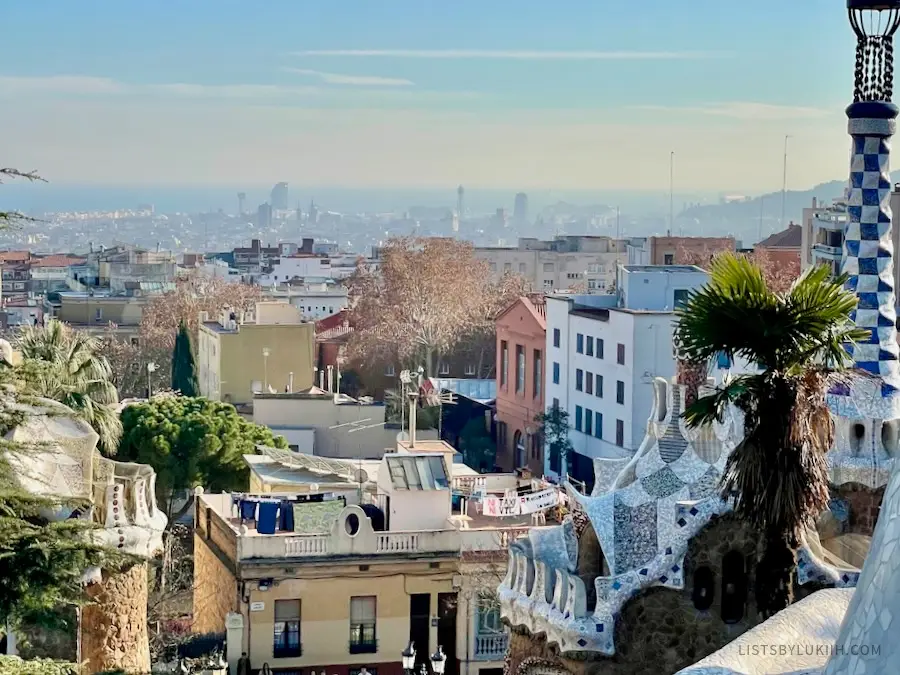Barcelona, one of Europe’s most visited cities, is a cosmopolitan city with Michelin-star restaurants, world-famous architecture, and dozens of hiking trails in the nearby Montserrat mountain.
Four days is enough time to experience the city’s top attractions as well as enjoy a day trip to Montserrat for some nature.
Wandering the streets of Barcelona was one of my favorite experiences in Europe, and here, I share great things to do and tips to optimize your itinerary. This post covers:
- ⭐️ Top things to do in Barcelona
- 🗓️ 4-day optimized itinerary
- 📍 Barcelona map with key places
- 🚇 How to get around
- ✏️ Barcelona trip planner
Lists By Lukiih is readers-supported. When you buy with my affiliate link, I may earn a small commission. Thanks!
Barcelona at a Glance
Before getting into the itinerary, here’s some general information on Barcelona to help you plan your trip.
🦐 What Is Barcelona Known For?
The city of Barcelona is known for its famous architecture, culinary prowess, and colorful neighborhoods.
The city boasts several Michelin-star restaurants and historic centers with narrow streets and charming squares.
📍 Where Is Barcelona Located?
Barcelona is located on the northeast coast of Spain in the Iberian Peninsula.
It is approximately 390 miles east of the capital city of Madrid. You can travel from Madrid to Barcelona on a two-and-a-half-hour train ride or an hour-and-a-half flight.
🗓️ How Long To Spend in Barcelona?
Most people recommend spending at least three days in Barcelona to see many of the top attractions.
I stayed in the city for four days, which gave me enough time to visit many of the major attractions as well as do a day hike to a panoramic view.
☀️ Best Time To Visit Barcelona
The most popular time to visit Barcelona is from April to June when the weather is above 70 °F.
I visited in May, which had perfect weather for exploring the city in short sleeves and jeans. However, it was a tad too cold for the beach.
💰 Is Barcelona Expensive To Visit?
For being one of Spain’s major tourist cities, Barcelona is semi-affordable to visit.
- Mid-range budget travelers – expect to spend about $160 a day in Barcelona.
- Budget travelers – expect to spend about $80 a day in Barcelona.
See my budget breakdown for my trip to Barcelona.
6 Essential Tips for Visiting Barcelona
Before getting into the itinerary, here are practical tips to know when traveling to Barcelona.
🎟️ 1. Book popular attractions in advance.
During the peak season (April to June), make sure to book Barcelona’s top attractions one to three weeks in advance as they tend to sell out in advance.
Getting tickets in advance is most important for the most popular attractions like La Sagrada Familia and Park Güell.
During those months, you can also expect long lines (e.g., sometimes over an hour long). Consider paying a small premium for skip-the-line tickets if you don’t want to wait.
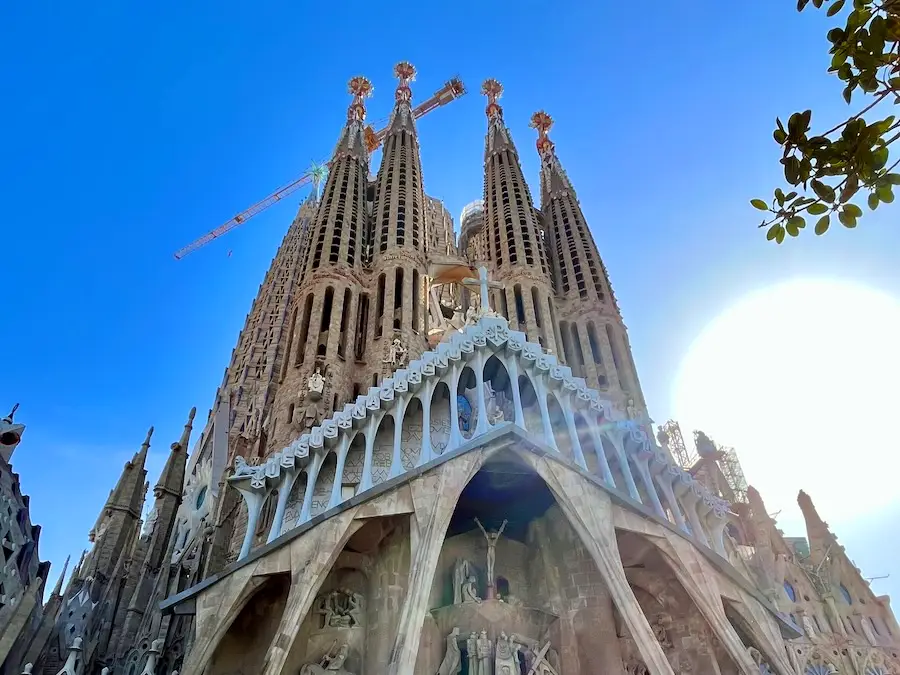
🍤 2. Plan to eat at a later time.
In Barcelona, like in the rest of Spain, lunchtime starts around 2 pm and dinnertime starts around 8 pm.
Local restaurants may not start serving dinners until 7 pm or 8 pm. Restaurants catering to tourists will start serving dinner around 6 pm.
You can take advantage of the later meal times by eating earlier to avoid the lunch and dinner rush. Make sure to check restaurants’ hours to make sure they’re serving food.
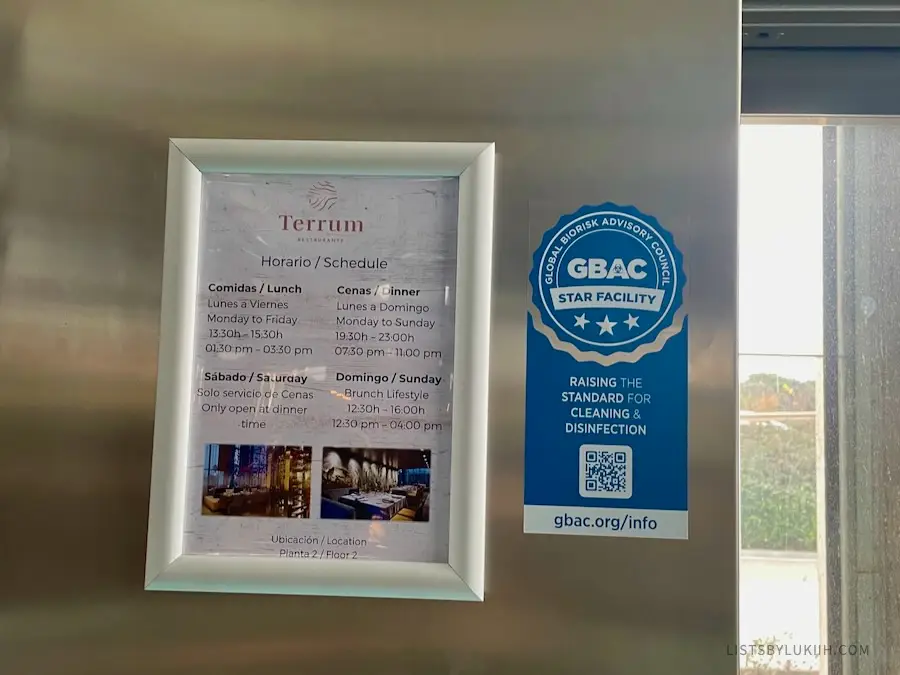
🚇 3. Take Barcelona’s public transport.
Barcelona has an extensive public transport system that you should take advantage of. The metro, bus, and tram are affordable, easy to navigate, and well-maintained.
See below for tips on getting around Barcelona.
🏰 4. Don’t see all of Gaudí’s works at once.
No Barcelona trip is complete without seeing one or several architectural masterpieces by Antoni Gaudi, the most influential Catalan artist in modern Spain. His works are some of Europe’s most popular attractions.
Gaudí has ten famous works in Barcelona, and you can easily burn out trying to see them all in a day or two.
Aim to see only about two of Gaudí masterpieces per day so you can fully appreciate them.
🏠 5. Stay in accommodation close to Barcelona’s central area.
Barcelona’s metro is extensive and can get you to many places, but you can also explore many different neighborhoods on foot.
Staying within ten minutes of Plaça de Catalunya is ideal as you’ll be able to easily access many of the surrounding neighborhoods either by walking or taking the metro.

🗣️ 6. Learn a few Catalan phrases.
Barcelona has two official languages: Catalan and Spanish. The majority of the population considers themselves fully bilingual.
English is widely spoken in Barcelona, but locals appreciate it when you’re able to say a few basic Spanish or Catalan phrases, such as:
| Phrase | English Translation |
|---|---|
| Hola | Hello |
| Bon dia | Good morning |
| Gracias/Gràcies | Thank you |
All prices mentioned here are in USD 💵 .
Getting Around Barcelona
Here’s how to get to Barcelona and get around once you’re there.
🚖 How To Get to Barcelona
Barcelona’s airport, Josep Tarradellas Barcelona-El Prat Airport (BCN), is ten miles from the city center.
Getting into Barcelona from the airport takes 15 to 45 minutes depending on traffic, method of transportation, and exact city destination.
You can get to Barcelona from the airport by calling a taxi, using a ridesharing app, taking the metro, or taking the bus.
- Taxi – Barcelona’s taxis are painted yellow and black. You can expect to pay $30 or more for a taxi ride into the city.
- Ridesharing app – Barcelona has Uber and Lyft, and they’re generally slightly cheaper than taxis.
- Metro – Barcelona has an extensive metro system. You can pay about $4 one-way to take the metro line L9 Sud from both airport terminals (T1 and T2) into the city.
You should also consider getting the Barcelona Card, which offers unlimited public transportation rides as well as discounts on some of Barcelona’s main attractions.
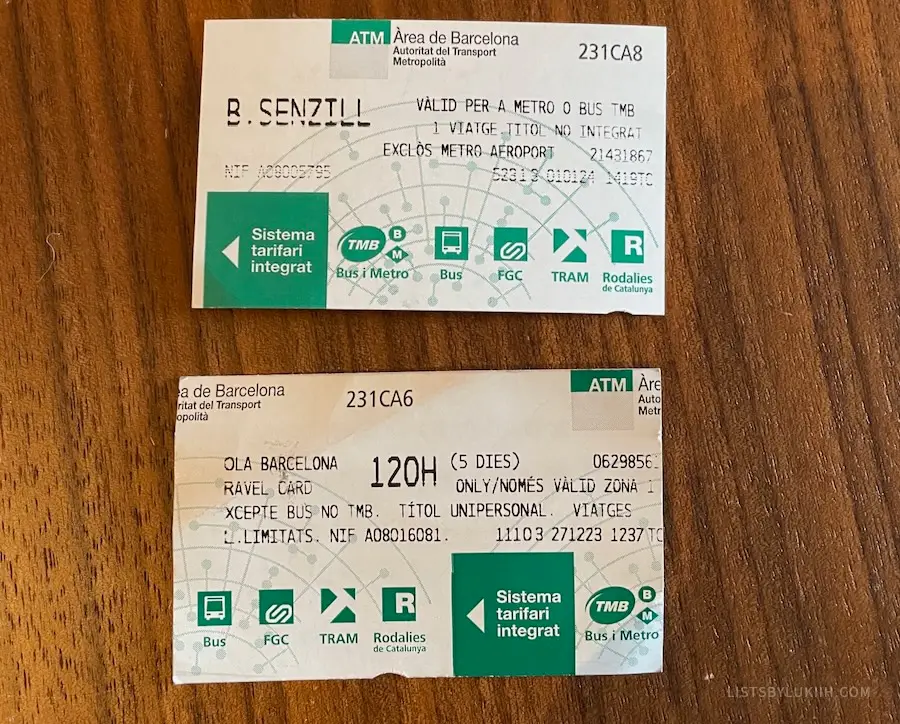
- Express bus – Barcelona has an express bus called Aerobus that costs $7 one-way. Aerobus runs their A1 and A2 buses from the T1 and T2 terminals, respectively, and they make the same stops.
I took the Aerobus to Barcelona because it’s reliable and took me to Plaça España, which is where I needed to go.
🚇 How To Get Around Barcelona
Once in Barcelona, you can get around in several ways, including walking, taking a taxi, calling an Uber, and riding the metro.
The best way to get around Barcelona is by riding their extensive public transportation system, which includes the metro, train (called FGC), and tram.
I primarily traveled around Barcelona by metro and train. Here are two things I learned about public transportation there:
- You can get almost anywhere in Barcelona by taking the metro, train, or tram – See the most up-to-date information on their official websites:
- You can save some money by buying an “integrated ticket” – An integrated ticket gives you access to the Barcelona metro, train, and tram for a limited time. They can be bought online or at the metro stations.
For example, a single metro ride costs about $2.60, but a T-casual card for Zone 1 (which you’ll mainly need if you’re staying inside Barcelona’s center) gives you ten rides for about $ 12.
Montserrat is a popular destination right outside Barcelona. A metro and train ride will get you there in 90 minutes.
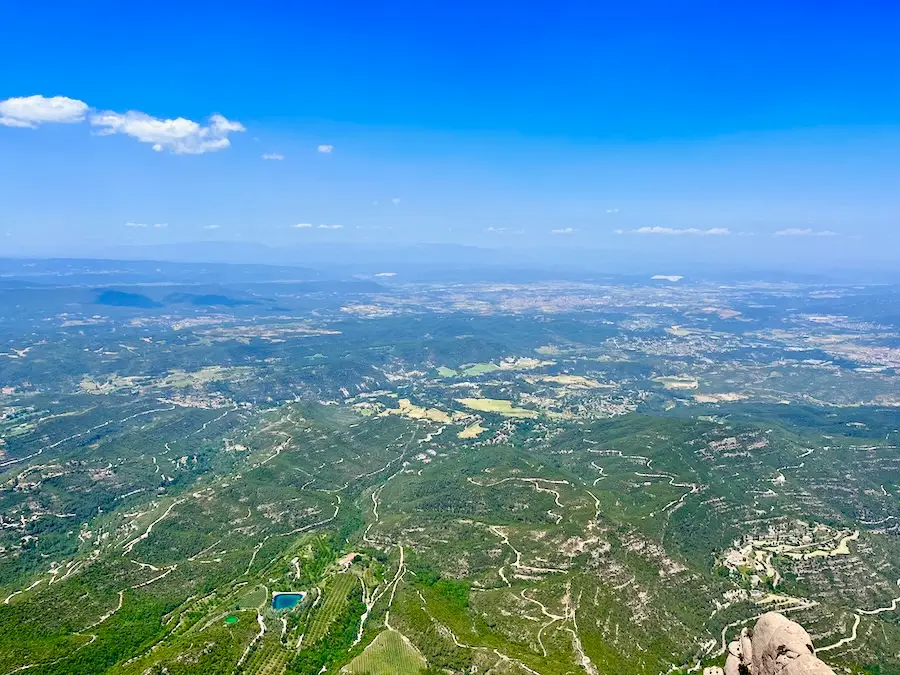
Barcelona Itinerary Map
This map has all the recommended places in the Barcelona travel itinerary below.
4-Day Barcelona Itinerary
This Barcelona itinerary efficiently sequences attractions and activities the city is famous for. It was put together thoughtfully with the help of a local friend.
This is an active itinerary. You will cover four to six miles daily by foot. You can make it less walking-heavy by taking public transportation.
I’ve also included suggested times for each activity based on my firsthand experience.
The Barcelona trip planner below has this itinerary prefilled.
| Day 1 – Get To Know Barcelona | ||
| ✈️ | Fly into Barcelona’s airport and get to the city’s center | Morning |
| 🍤 | Get settled in and grab lunch | Lunch |
| 🚶🏻♀️ | Take a Gothic Quarter walking tour | 3–5 pm |
| 💍 | Explore El Born | 5–7 pm |
| 🌳 | Walk through Parc de la Ciutadella | 7–8 pm |
| 🥘 | Eat tapas for dinner | 8:30–9 pm |
| Day 2 – The Works of Gaudí | ||
| 🏰 | Visit the famous La Sagrada Família | 10 am–12 pm |
| 🍤 | Have lunch at Vinitus | 12:30–2 pm |
| 🏰 | Visit Casa Batlló or another of Gaudí’s work | 2–4 pm |
| 🍉 | Walk down Las Ramblas | 5–7 pm |
| Day 3 – Day Trip to Montserrat | ||
| 🥾 | Take a hiking day trip to Montserrat | All day |
| Day 4 – La Barceloneta & El Poble-Sec | ||
| 🏖️ | Explore La Barceloneta | Morning |
| ⛲ | Visit the El Poble-Sec area | Afternoon |
| ⚽️ | See Camp Nou | Afternoon |
12 Great Things To Do in Barcelona
Having spent four packed days in Barcelona, I share my recommendations and honest opinions on the top attractions and activities below, listed in rough order of priority.
All prices mentioned here are in USD 💵 .
1. See La Sagrada Familia
🤔 Why: La Sagrada Familia is a unique, eccentric temple and a UNESCO World Heritage Site. It’s the renowned Catalan architect Antoni Gaudí most famous work and Barcelona’s most popular attraction.
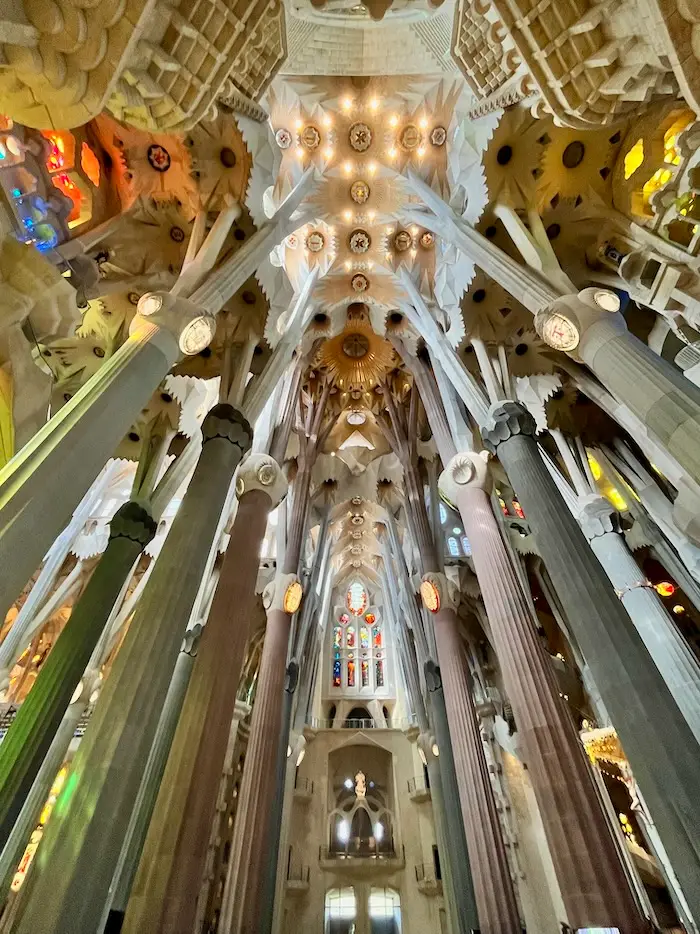
📍 Getting There: La Sagrada Familia is next to the Sagrada Familia metro station.
💰 Admission Fee: Tickets start at €26 (roughly $27). Tickets include a self-guided audio tour.
La Sagrada Familia is almost always crowded, so book your tickets in advance. You need to book weeks ahead during the peak season. You can pay a premium to skip the line.
⏰ Suggested Duration: 1 to 2 hours. If you visit during the peak season, budget an additional hour for waiting in line.
🍀 Lukiih’s Take: I have visited dozens of European temples, and La Sagrada Familia is by far the most breathtaking. Its uniqueness makes it well worth visiting.
2. Explore the Gothic Quarter
🤔 Why: Gothic Quarter, also called Ciutat Vella (“Old City” in Catalan), is the historic center of Barcelona. It’s known for its medieval architecture, labyrinthine streets, and vibrant atmosphere.
While exploring the Gothic Quarter, make sure to stop at the Barcelona Cathedral, one of the city’s most important and famous churches.
📍 Getting There: You can explore the center by taking a Gothic Quarter walking tour or a free walking tour hosted by a local guide, which is what I did.
💰 Expected Cost: Walking tours are typically around $20. The free walking tours are tip-based, so you can give any amount you like.
⏰ Suggested Duration: 2 to 3 hours
🍀 Lukiih’s Take: I recommend doing a Gothic Quarter walking tour upon arrival. I found it relieving not to have to figure out where to go on my first day. It’s also a nice way to quickly familiarize yourself with the city.
3. Eat Tapas (Lots of It)
🤔 Why: Barcelona is known for its excellent cuisine, and the tapas culture is an important part of the culinary scene. Tapas are small, savory dishes that can be enjoyed as appetizers or a whole meal.
One of my favorite tapas restaurants is Vinitus, which has a standout Burnt Saint Teresa torrija (bread pudding).
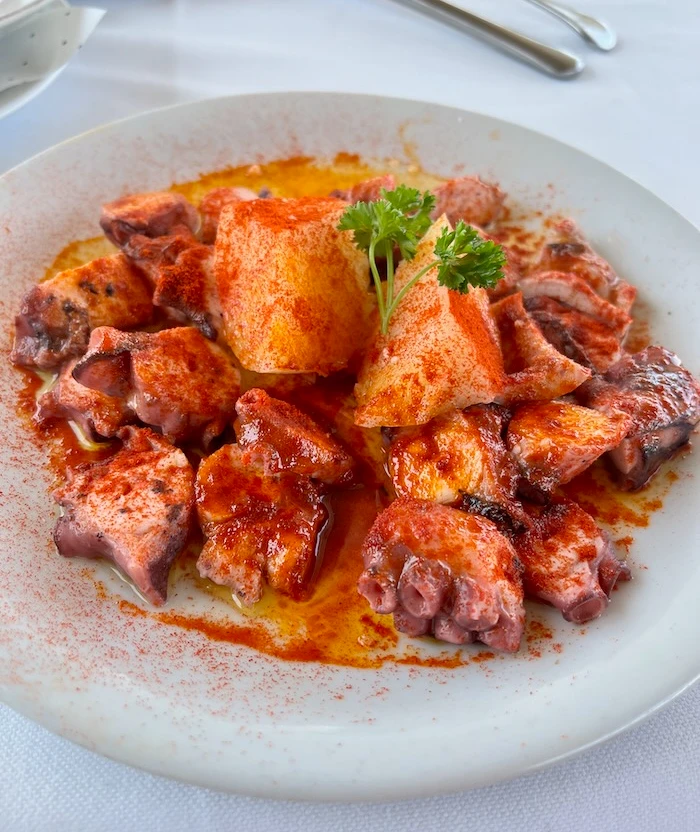
⏰ Suggested Duration: Meals in Barcelona are generally relaxed and typically take more than an hour.
💰 Expected Cost: A tapa generally costs $3 to $5 with some upscale restaurants charging double the price. I visited Vinitus twice and averaged $27 per meal, but could have brought the price down to $20 had I been sharing plates.
If you’re unfamiliar with tapas, Barcelona has several guided tapas tours like this highly-rated one.
🍀 Lukiih’s Take: Eating tapas is one of the best things you can do in Barcelona. One of my favorite tapas is “pulpo a la gallega,” which is an octopus with potatoes and paprika (these are generally served in large portions). For smaller tapas, I loved “jamón Ibérico” (cured ham) and “pimientos de padron” (small, hot peppers).
4. Take a Day Trip to Montserrat
🤔 Why: Montserrat is a famous mountain outside of Barcelona, and it’s considered one of the best day trips to take from the city. It has over a dozen hiking trails and other well-known attractions.
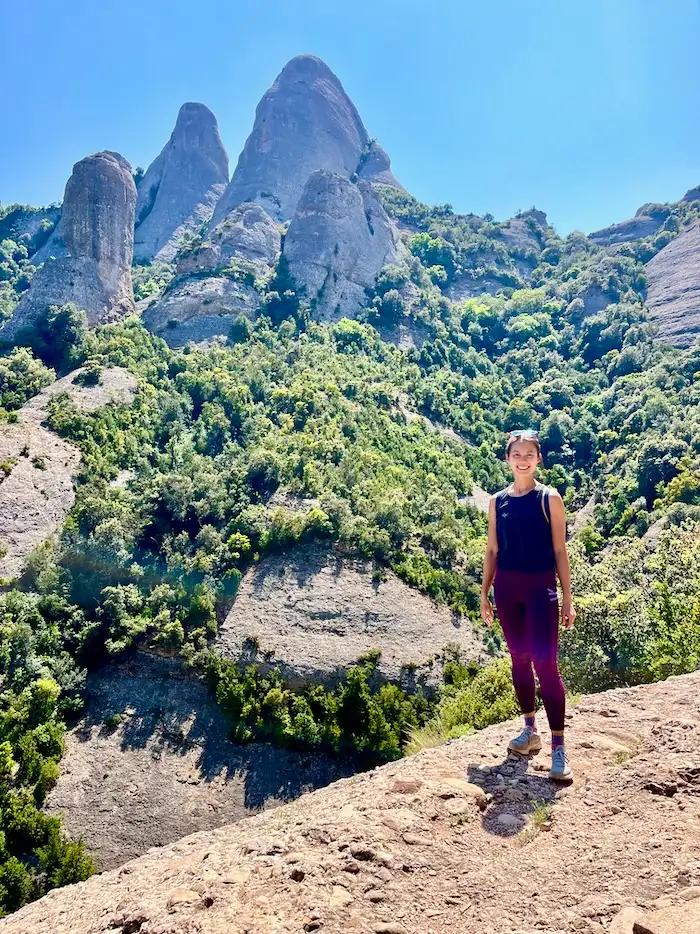
Learn how to visit and hike Montserrat.
⏰ Suggested Duration: Half a day to a full day.
🍀 Lukiih’s Take: Montserrat is a great place to visit to briefly get away from the city. I did a moderate hike to a beautiful panoramic view.
5. Walk Down Las Ramblas
🤔 Why: Las Ramblas, sometimes called La Rambla, is a notable boulevard filled with stalls, flower shops, artists, and more. It’s a bustling, pedestrian-only tourist hot spot.
Make sure to stop by Mercado de La Boqueria before they close at 8:30 pm to get some fresh fruits and snacks. The local market is cash-only.
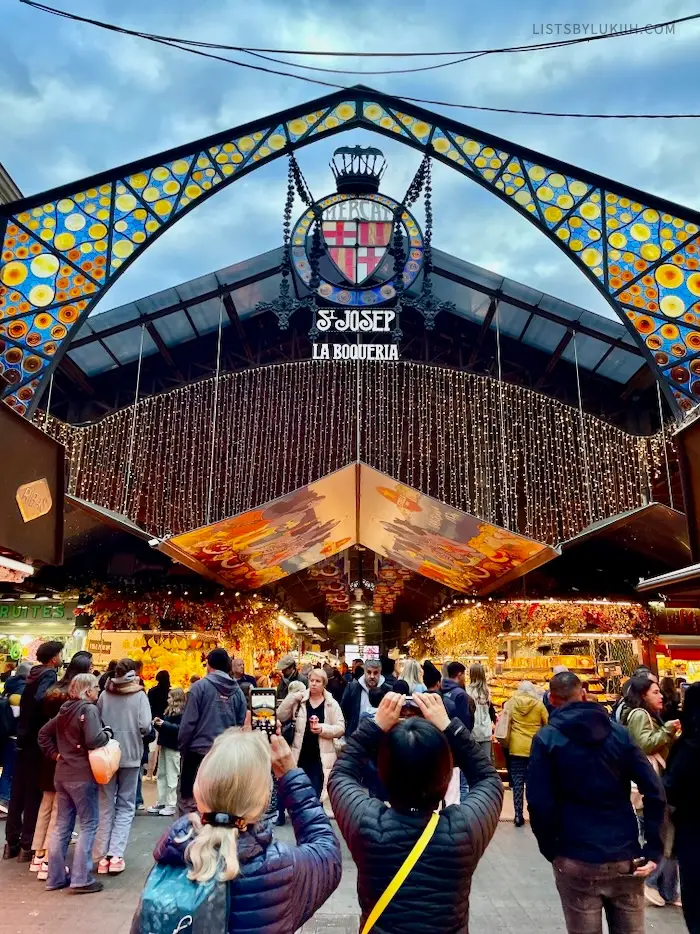
📍 Getting There: Las Ramblas is located a short walking distance from Plaça de Catalunya.
⏰ Suggested Duration: 1 to 3 hours
💰 Expected Cost: Las Ramblas has no entrance fee, but it’s lined with vendor stalls, so expect to spend a few euros while visiting.
🍀 Lukiih’s Take: Las Ramblas can be touristy, but it has a nice atmosphere with locals and tourists walking around and shopping. I especially loved the busy energy at night.
6. Wander Around El Born
🤔 Why: El Born is an artistic and historic neighborhood in Barcelona with charming winding streets and small art galleries, jewelry shops, and shopping boutiques.
El Born is also home to the Picasso Museum, which thoroughly documents the artist’s progression. Art enthusiasts can take a walking tour focused on Picasso.
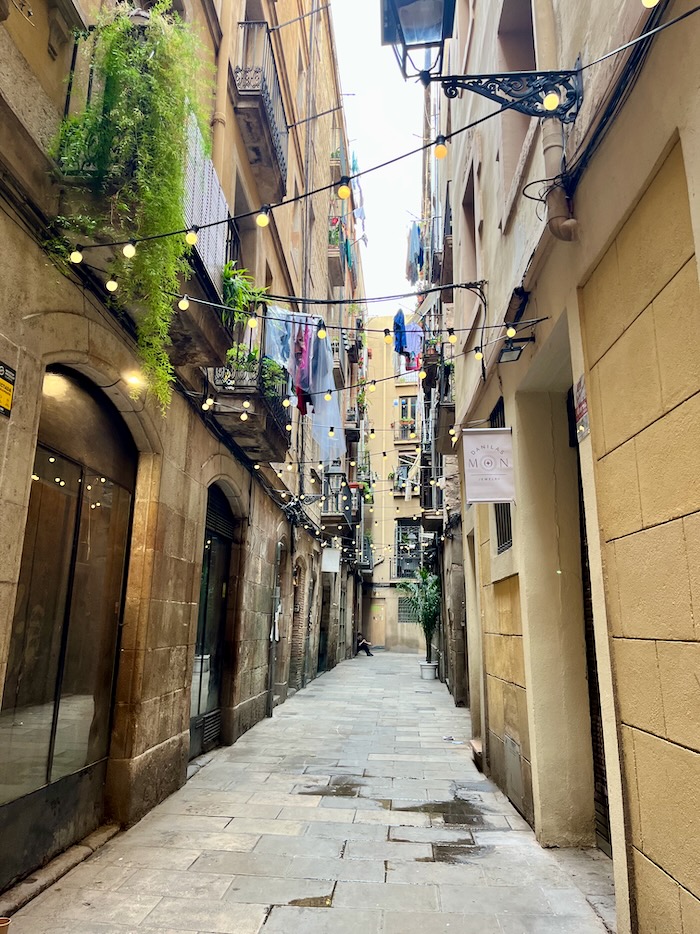
📍 Getting There: El Born is a short walking distance northeast of the Gothic Quarter.
💰 Expected Cost: El Born is free to walk around, but know that some of the trendy shops can get pricey.
⏰ Suggested Duration: You can spend an hour or more walking through the neighborhood and looking at trendy shops, restaurants, bars, and spas.
Dr Stravinsky is a cool bar in El Born that serves unique drinks and is recommended by locals. They have a “drink profile” menu that helps you choose a drink based on the types of flavors you like.

🍀 Lukiih’s Take: When walking around, don’t worry about having a destination. El Born is a great place to wander around aimlessly.
7. Enjoy La Barceloneta Beach
🤔 Why: La Barceloneta is an older and local neighborhood that used to be inhabited by fishermen and is now located next to the popular Barceloneta Beach. The beach is a popular destination, featuring golden sand, water activities, and a vibrant atmosphere.
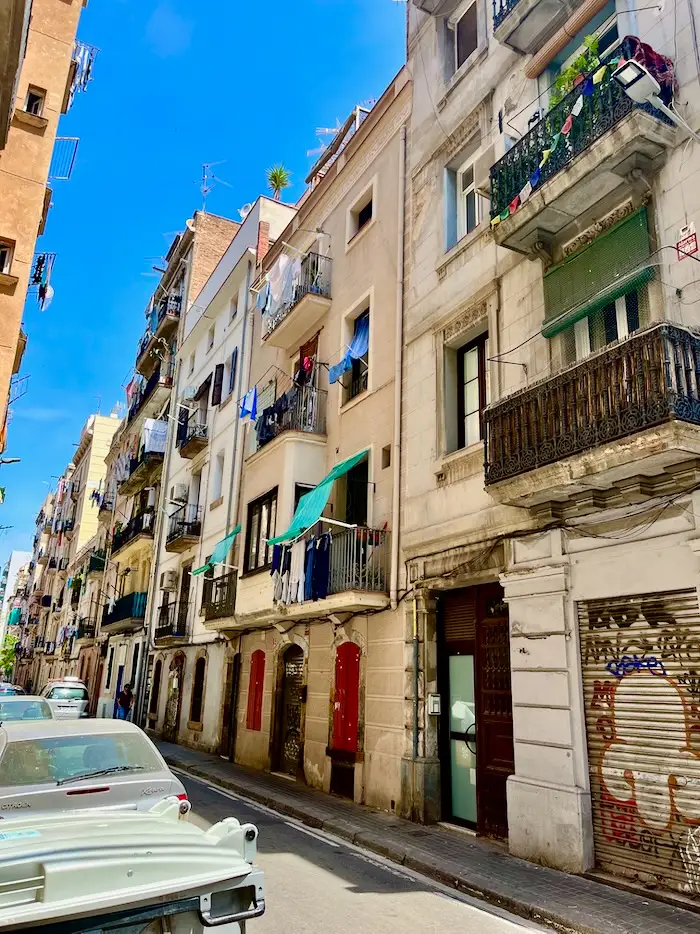
📍 Getting There: La Barceloneta is located on the eastern coast of Barcelona and is accessible by foot or public transport.
⏰ Suggested Duration: Half a day to a full day
🍀 Lukiih’s Take: My favorite part of Barceloneta was walking through the older, local, and quieter streets of the neighborhood that are starkly different from the more tourist, trendy streets of El Born. I also spent an hour in the Museum of the History of Catalonia, which has an exceptional self-guided audio tour.
8. Visit Park Güell
🤔 Why: Park Güell is one of Gaudí’s most popular and iconic landmarks. The park is characterized by unconventional architecture, creative designs, and colorful mosaics against a backdrop of palm trees.
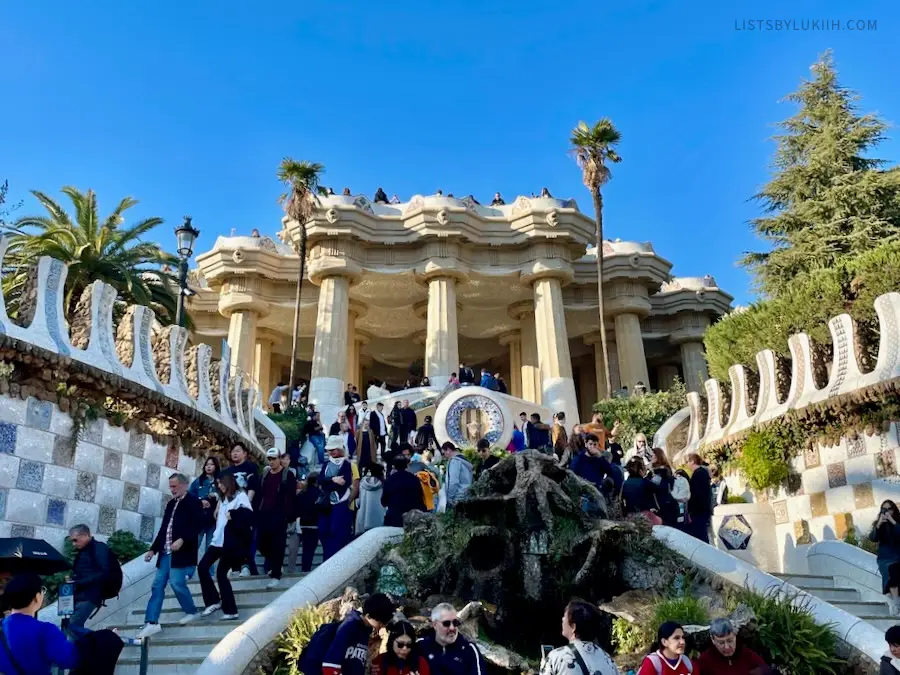
📍 Getting There: Park Güell is located on the north side of Barcelona.
⏰ Suggested Duration: Budget about one to two hours exploring Park Güell.
💰 Admission Fee: €10 (roughly $10.50). You can see parts of the park from outside if you don’t want to pay the fee.
Book Park Güell in advance as tickets are frequently sold out during the peak season. You can also pay a premium to skip the line and get a guided Park Güell tour.
🍀 Lukiih’s Take: I didn’t make it to Park Güell and prioritized some of Gaudí’s smaller works. That said, Park Güell is one of Barcelona’s biggest attractions, and many visitors enjoy taking photos of the colorful sculptures there.
9. See Other Works by Gaudí
🤔 Why: Antoni Gaudi is the most influential Catalan architect in modern Spain and has ten masterpieces in Barcelona. La Sagrada Familia and Park Güell are the two most popular, but his other masterpieces are also worth checking out.
- Casa Batlló – an eccentric Gaudí house enhanced with an optional VR experience. The entrance fee starts at $30 online and increases to about $35 at the box office.
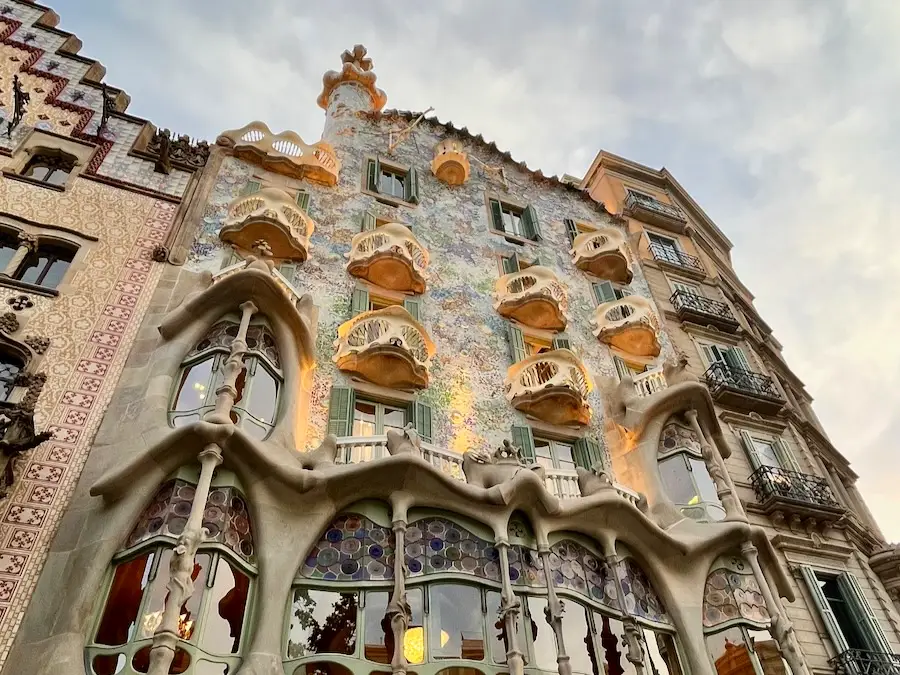
- La Pedrera Casa Milà – another of Gaudí’s home masterpieces. The entrance fee is about $27. The internet’s consensus is that Casa Batlló is a better value than La Pedrera, but the latter is a quieter experience.
Both Casa Batlló and Casa Milà are located on Passeig de Gràcia, a notable avenue known for high-end shopping.
- Palau Güell (Güell Palace) – an early mansion designed by Gaudí for a tycoon. The entrance fee is $13, and many visitors rave about the intricate architecture.
Palau Güell is next to Plaça Ceial, a green space with palm trees, cafes, and outdoor dining spaces.
If you want a break from Gaudí and check out a building by a different renowned Catalan architect, consider visiting Casa Amatller instead.
⏰ Suggested Duration: 1 to 2 hours per building
🍀 Lukiih’s Take: I visited Casa Batlló and thoroughly enjoyed my solo, self-guided tour here.
10. Go Further Out to Poble-Sec
🤔 Why: Poble-Sec is a neighborhood that’s a bit further out from the city center, but has several notable attractions:
- Magic Fountain of Montjuïc – a notable fountain that hosts an extremely popular light and water show.
As of February 2024, Barcelona is still experiencing a drought, so the Magic Fountain shows are on hold.
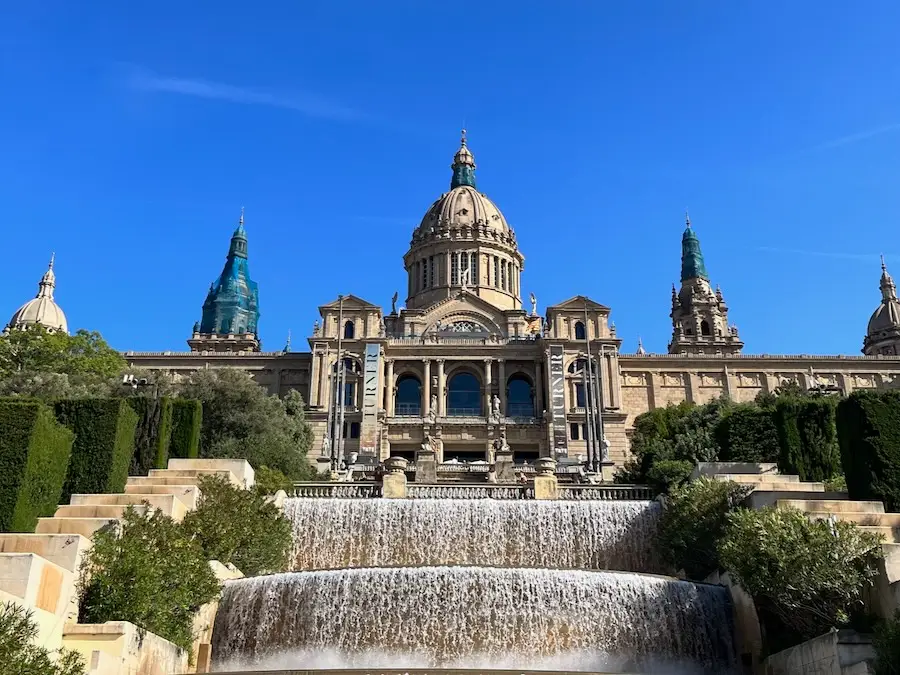
- Lluís Company’s Olympic Stadium – a historic venue that hosted the 1992 Olympics and now hosts other sporting events.
- Montjuïc Castle – a historic fortress on a hill that overlooks Barcelona. You can book a highly-rated small group tour if want a knowledgeable guide to take you through the history.
- Montjuïc cable car – get panoramic views of Barcelona for around $15 per ride.
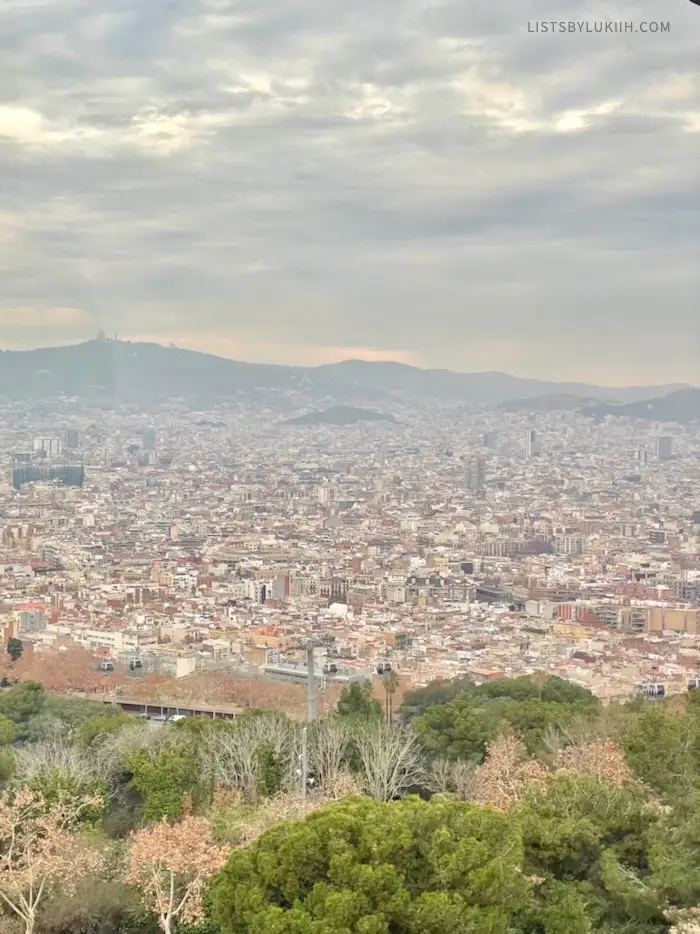
🚇 Getting There: Take the metro to Espanya station and you’ll be a short walk away from the Montjuïc Fountain.
⏰ Suggested Duration: 2 hours to half a day
🍀 Lukiih’s Take: I don’t think the Poble-Sec area is a “must-see”, but it does allow you to see a different part of Barcelona. It’s worth a visit if you enjoy seeing a city from above, as the Montjuïc hill gives you a beautiful view of Barcelona.
11. Hang Out at Parc de la Ciutadella
🤔 Why: Parc de la Ciutadella is the largest park in Barcelona. It serves as a green oasis in an urban environment, featuring big green lawns, shaded areas, and water areas.
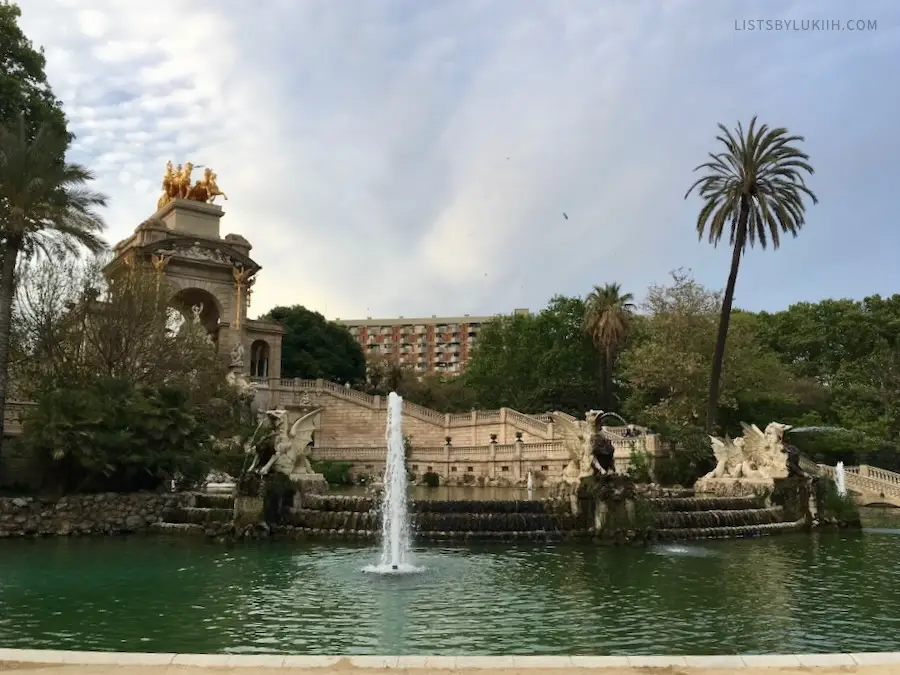
🚇 Getting There: Parc de La Ciutadella is near El Born and La Barconaleta neighborhoods and can be reached on foot.
💰 Admission Fee: Free
⏰ Suggested Duration: 30 minutes to half a day
🍀 Lukiih’s Take: Ciutadella Park is one of the best places to observe local life and people-watch. Just keep in mind that it’s a busy urban park with street performers and vendors, so don’t expect tranquility.
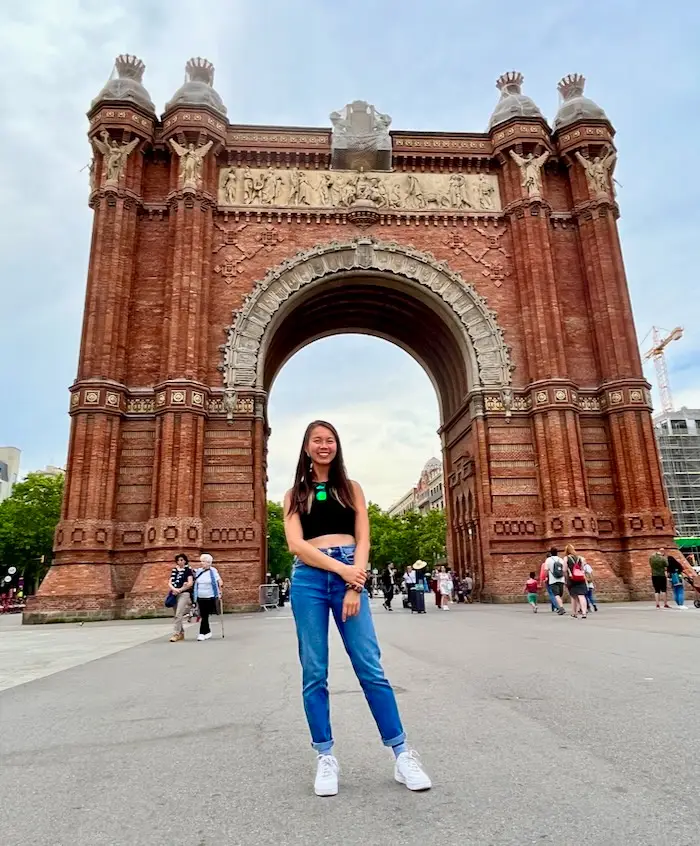
12. Check Out Camp Nou
🤔 Why: Camp Nou is the third-largest football stadium in Europe. For soccer fans, it’s a notable attraction as it’s been the home of FB Barcelona since 1957. Even if there’s no game happening, you can take a tour and visit its museum.
🚇 Getting There: There are several bus stops located around Camp Nou.
💰 Admission Fee: Tickets start at €19 (roughly $20)
🍀 Lukiih’s Take: Camp Nou is a bit further out and harder to get to, so I primarily recommend it for soccer fans.
Where To Stay in Barcelona
Here’s some guidance on where to stay in Barcelona.
🏠 What To Consider
When choosing accommodation in Barcelona, here are some things to consider:
- Walking distance to different neighborhoods – I wanted to stay in the center of Barcelona to easily access different neighborhoods, so the Gothic Quarter area was ideal for me. I also liked being near La Boqueria market for quick snack stops.
- Price and luxury tradeoff – The center of Barcelona is expensive, especially during the high season, which is when I visited. Mid-range hotels were at least $80 to $100 a night. Since I was traveling solo and didn’t have someone to split a room with, I opted for a cheaper room in an Airbnb.
🏠 Where I Stayed
During my trip to Barcelona, I stayed at an Airbnb room in the Gothic Quarter and paid $54 per night. This was my first time staying in a hostel-style Airbnb room and here are my honest thoughts on it.
👍 Pros – The Airbnb host was helpful, flexible, and knowledgeable, the place was clean and the location was great. I had access to the living room and balcony which was nice for taking a break from sightseeing.
👎 Cons – Since it was a cheap place for its location, I only rented a room and had to share bathrooms with up to six other people, which sometimes was extremely inconvenient.
Barcelona Trip Planner 2024
To make your travel planning easier, download the trip planner below and use it as a starting point. The planner has country-specific travel information, an itinerary, a packing list, and a map with key places pinned.
The trip planner is built on Notion, which I use for all my travel planning (I genuinely love this tool). If you don’t have Notion, creating an account is free.
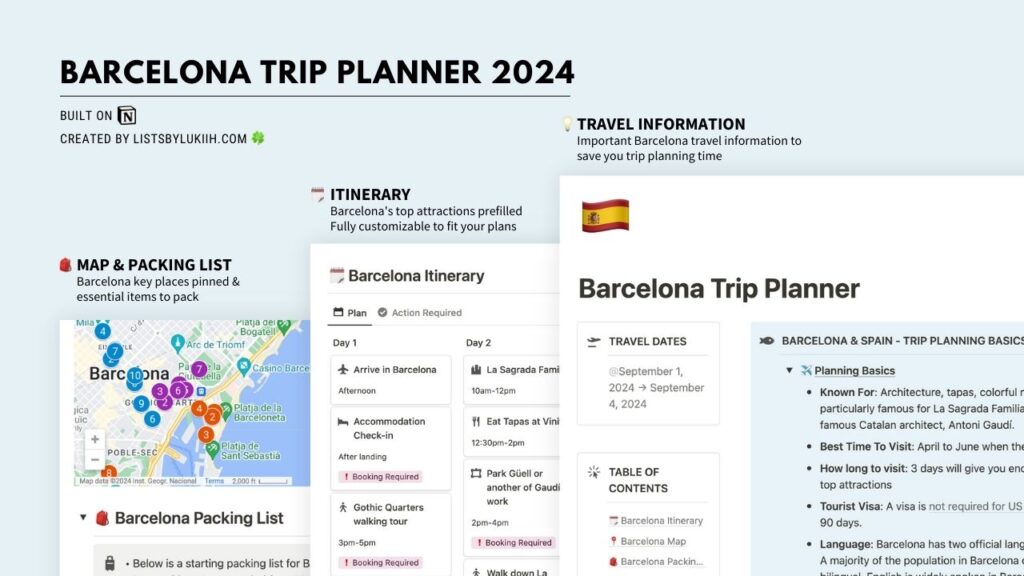
🧋 Support Lukiih
Lists by Lukiih is a humble website that I fund with my own savings. If you find my tips helpful, I appreciate you saying thanks with a bubble tea!
